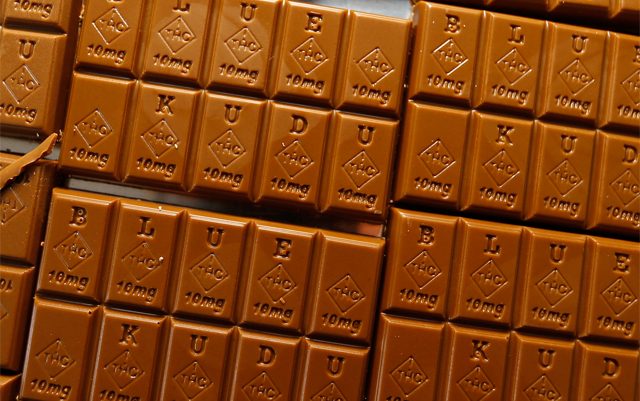When it comes to making cannabis-infused products, the white lab coat scientists who set the standards are nowhere to be found. What’s up with that? Having worked with food scientists and personally formulated and compounded an important drug into a food product, I have a few observations that might help improve the situation.1
The bottom line is this: most of the people making edibles don’t have the food science or lab science experience needed to get the work done. So they don’t know they have to solve the 3 basic problems faced by every food scientist making a product to uniformly deliver nutrients or medication.2 And those scientists working in other food industries have not yet turned their attention to cannabis edibles because it’s been illegal; no sensible scientist wants to ruin their career.
- Mixing very small amounts of anything into batches of food is a very exacting science. The average edible is 1 part THC to 5,000 parts for all the rest of the recipe.3 It’s very hard to get that 1 part mixed evenly throughout a batch, without overmixing and ruining the food blend. And doing it batch after batch requires following good food manufacturing practices — which many edible producers don’t have a clue about.
- Lab measurement equipment is very precise and accurate, but extracting the THC from any food takes very experienced scientists; it’s more art than science. And very few test labs have ever performed the reproducibility studies necessary to know what percentage of the cannabis components they are extracting from edibles. It’s critical to follow good laboratory practices, and most labs rarely go beyond the basic certification levels.
- Then there is the basic human science of drug absorption. Most estimates show 8% to 12% of THC is absorbed into the body from edibles, so almost 90% never gets absorbed. But people are not uniform lab rats, our metabolism varies dramatically depending on time of day, other foods eaten, even our individual cannabis metabolism rate.
So what’s a person to do, especially when smoking or vaping cannabis just isn’t right for you? Who is standing up for cannabis consumers? Where is our Ralph Nader for pot products?
Until that person appears, the best we can do is insist that uniform standards are instituted, and contact the producers or insist that dispensaries push the product producers into these practices. We need to make them prove they meet strict standards like nutritional supplements and other medicated foods and that their labs meet FDA standards and have experienced scientists. And in the meantime, do your best to buy reputable brands because they have a lot to lose if they make a bad batch of edibles.
______________________________________________________________________
Footnotes
1. oral methadone in psyllium, gelatin base
2. batch mixture uniformity and validation, lab method extraction consistency and validation, process consistency and validated sampling methods
3. e.g. 20 mg THC in a 10 gram cookie







Another compelling argument for the deployment of Good Manufacturing Practices in this industry segment
Newly Published Article About THC/CBD in Food – Hooray For The White Lab Coated Scientists!
Like the US Cavalry arriving in a John Ford movie with bugles blaring in the ‘nick of time’- the toxicology food lab scientists are here! It just took them a while to get published. Only last month I wrote about the problem that cannabis labs couldn’t figure out how to test medibles consistently.
Cannabis edibles patients and customers, plus the medibles producers, had lost faith in their labs and nobody knew how to solve the problem. That article gave the basic issues that needed to be dealt with by the labs and the producers.
Now several forensic toxicology colleagues have created a standardized lab method to analyze for THC and CBD in cannabis food products, including matrix effects. Plus they have demonstrated that THC and CBD are stable for at least 3 months in medibles! That is great work and the cannabis industry should send a big shout-out to the gals and guys in the lab. This is a perfect example of technology scientists solving useful problems and full publication pushing the industry towards better products.
Every lab needs to try out this method and run it though their laboratory validation process. The labs don’t have to use this method if they have a better one, but this method looks like it could become the legal standard adopted by reference labs and government agencies.
If you make medibles or sell them, you need to make certain that your lab knows about this test procedure and uses it. This method is fairly simple and fast, but we don’t yet know if it is reliable across many different labs and analysts- that will come from people trying the method and publishing their results.
http://jat.oxfordjournals.org/content/early/2016/10/18/jat.bkw114
Stability of Tetrahydrocannabinol and Cannabidiol in Prepared Quality Control Medible Brownies Carl E. Wolf*, Justin L. Poklis and Alpho